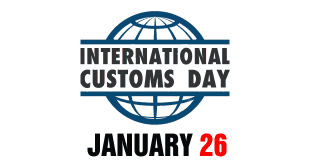World Contraception Day is observed on September 26 to spread awareness about contraceptive methods that are available and to enable young people to make informed choices on their sexual and reproductive health. Let us read about the day in detail.
World Contraception Day:
Every year, September 26 is observed as World Contraception Day. According to UNFPA estimates, “about 12 million women may have lost access to contraception, and 1.4 million unintended pregnancies may have occurred during 2020 across 115 low and middle-income countries.” The day raises awareness about contraception and safe sex. As per UN experts, “Every woman and adolescent girl has the right to access contraception and family planning services, information and education.”
Date:
- 2024: 26 September, 2024 [Tuesday]
- 2025: 26 September, 2025 [Thursday]
- 2026: 26 September, 2026 [Saturday]
- 2027: 26 September, 2027 [Sunday]
Theme:
- 2024: A choice for all. Freedom to plan, power to choose
- 2023: The Power of Options
- 2022: Sustaining Family Planning Services in Sri Lanka
- 2021: It’s your life, it’s your responsibility
- 2020: Know your options
- 2019: It’s your life, it’s your responsibility
- 2018: It’s your life, it’s your responsibility
- 2017: Access to safe family planning is a human right
World Contraception Day is observed on September 26 annually. According to the Pace Hospital website, the theme for World Contraception Day 2023 is “The Power of Options,” the essential role that contraceptive options play in enabling people to take control over their reproductive health is highlighted. This theme comprises not only just contraception; it also promotes autonomy, makes educated decisions possible, and advances international efforts in reproductive health and family planning.
About Contraception: Types of Contraceptive Methods
The contraceptive is a birth control method required to prevent unwanted pregnancies. Various types of birth control methods are available including intrauterine contraception, hormonal methods, barrier methods, fertility awareness-based methods, male sterilization–vasectomy, etc.
World Contraception Day: History
It was first observed in 2007 on 26 September by ten international family planning organizations to spread awareness about contraception and to help couples make informed decisions about starting a family so that every pregnancy is wanted.
During the International Conference on Population and Development in 1994, it was stated that the right of all couples and people to choose the number and spacing of their offspring was independent and responsible. It is also embodied in the 2030 Agenda for Sustainable Development within goal 3.7.
The campaign focuses not only on women but also on their parents, healthcare professionals, and other relevant persons, who should be as informed about contraception as possible.
World Contraception Day: Significance
According to the WHO, the significance of World Contraception Day is similar to the goal of Sustainable Development. Which says, “By 2030, ensure universal access to sexual and reproductive healthcare services, including family planning, information and education, and the integration of reproductive health into national strategies and programs.”
Contraceptives enable or allow women and adolescent girls to exercise their right to decide whether to be pregnant or not and to have safe sexual experiences without the risk of unintended pregnancies. Socioeconomic opportunities are also improved through contraception and more educational opportunities will open up for adolescent girls.
Today, globally, more women or their partners are using contraceptive methods than ever before. According to WHO, one in 10 women of reproductive age 270 million estimates have an unmet need for family planning, and more than 200 million women who want to avoid pregnancy are not using modern contraception due to range barriers. World Contraception Day is celebrated worldwide through online and offline campaigns which completely focus on reaching the masses. The whole program revolves around women’s health, sexual health, infant mortality and more.
Factors that negatively influence contraception:
Even in these days of widespread knowledge, there are still various hindrances to the proper usage of contraceptives. The following are some of the various hurdles which are necessary to overcome, breaking the boundaries of hushed tones and spreading contraceptive awareness:
- A worry about side effects
- Religious or cultural antagonism
- Gender-based obstacles
- A few options
- Services offered are of low quality
- Limited availability of contraceptives
International statistics and facts on contraception:
Some of the common statistics and facts regarding contraception include:
- Currently, there are about 25.7 crore women who attain pregnancy despite their choice in planning
- Nevertheless, contraceptive methods are not employed
- IUDs are regarded as the safest form of contraception, having a failure rate of less than 1%
- Women of all ages often choose a pill as their preferred form of birth control
- Since ancient times, both men and women have utilised contraceptives. Studies have shown that contraceptives were used by women in Ancient Egypt as well
- Contraceptive use protects against sexually transmitted diseases (STDs) as well as averting unintended pregnancies
 Kids Portal For Parents India Kids Network
Kids Portal For Parents India Kids Network







